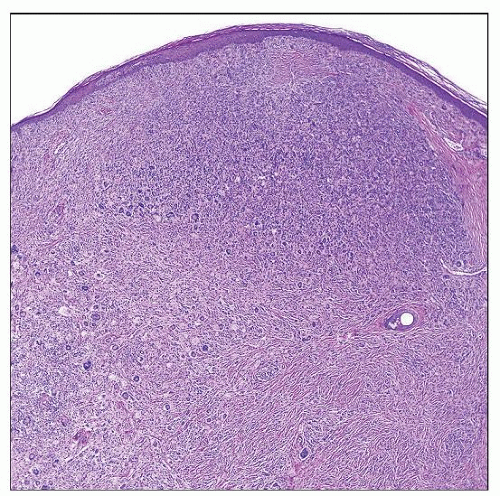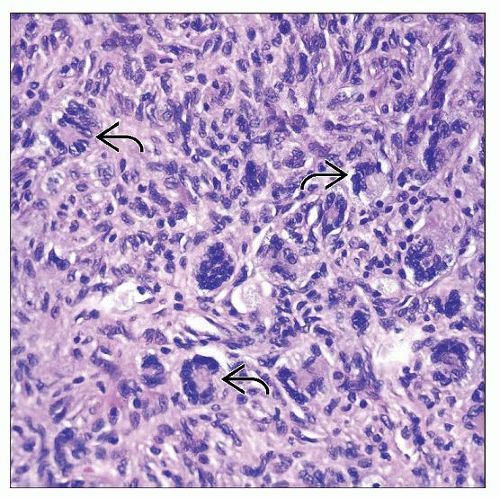Juvenile and Adult-type Xanthogranuloma
Elizabeth A. Montgomery, MD
Key Facts
Terminology
Stable or regressing histiocytic lesion that usually occurs in childhood
Form of non-Langerhans histiocytosis
Clinical Issues
Majority in individuals under 3 years
Visceral examples almost exclusively in infants and children
Solitary cutaneous lesion in majority of cases
Head and neck > trunk > extremities
Microscopic Pathology
Mononuclear cells
Multinucleated cells ± Touton features
Variable lipid and foamy histiocytes
Spindle cells
Inflammatory cell background
Eosinophils are a frequent finding
 This is a typical appearance of a juvenile xanthogranuloma removed from the face of a small boy. The lesion is uniform and cellular and proliferates in the dermis with no grenz zone. |
TERMINOLOGY
Abbreviations
Juvenile xanthogranuloma (JXG)
Synonyms
Nevoxanthoendothelioma
Definitions
Stable or regressing histiocytic lesion that usually occurs in childhood
Form of non-Langerhans histiocytosis
CLINICAL ISSUES
Epidemiology
Incidence
Rare
Age
Majority in individuals under 3 years
Visceral examples almost exclusively in infants and children
13-30% in older children and adults
Gender
Slight male predominance





